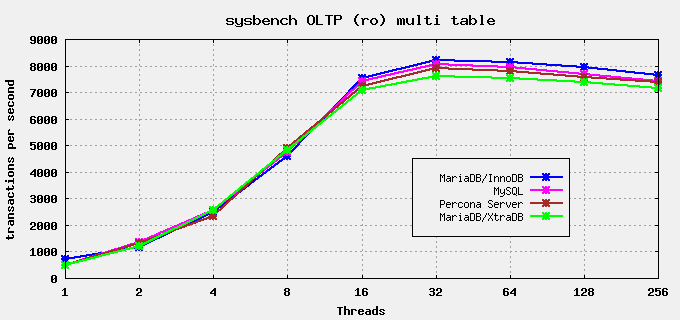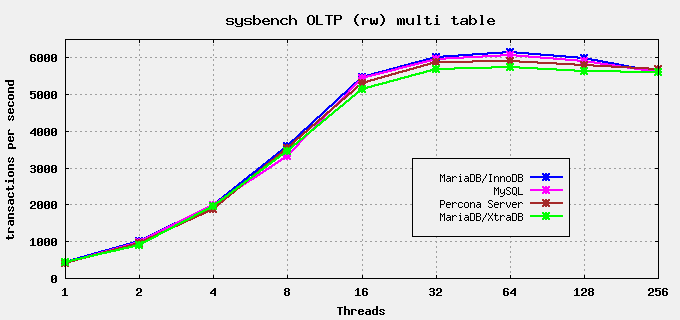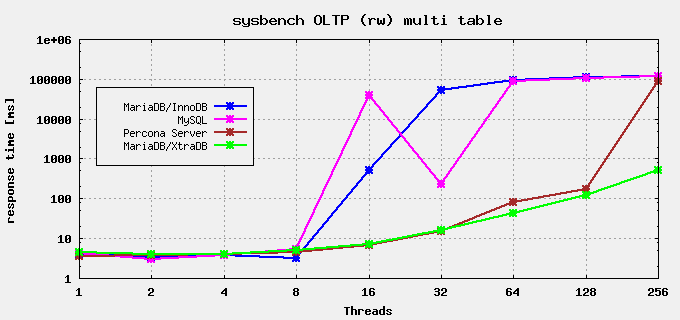5.5 Series Sysbench OLTP Results
A few days ago MariaDB, MySQL and Percona all three released new versions of the 5.5 server. So I decided it’s time to run sysbench once more and compare the OLTP performance. The test candidates are:
- MariaDB-5.5.24, using either XtraDB (default) or InnoDB
- MySQL-5.5.25
- Percona Server 5.5.24-26.0
For the benchmarks I used our trusty old pitbull machine which has 24 cpu cores, 24G of RAM and a nice RAID-0 composed of 3 SAS SSD.
The benchmark was sysbench-0.5 multi-table OLTP, using 8 tables with total 10G of data. InnoDB buffer pool was 16G, InnoDB log group capacity 4G (the maximum for MySQL). The mysqld process was constrained to 16 cores, sysbench to the other 8.
The only nonstandard tuning was for I/O scalability: innodb_io_capacity = 20000 and innodb_flush_neighbor_pages = none (for Percona Server and MariaDB/XtraDB). See my recent article on I/O tuning for an explanation.
The result for read-only OLTP is nicely balanced. This plot shows the median throughput:

also the response time is nicely flat (the plot shows the 99% quantile, means at most 1% of the requests was slower than that):

In fact the behavior shows nearly perfect scaling: up to 16 threads (= number of cpu cores for mysqld) the response time is constant. For higher concurrency we see a straight line in the double-logarithmic plot.
For read/write OLTP the picture looks quite similar, if we look at the transactions per second graph first:

The picture changes when we look at the response time (99% quantile again). The InnoDB based servers exhibit severe stalls caused by checkpointing as soon as we approach 16 client threads:

The XtraDB based servers handle the write load much better due to the better checkpointing algorithm.
Conclusion: if your workload is read-mostly OLTP, then it makes not much difference performancewise if you chose MariaDB, MySQL or Percona Server. So you can base your decision on other facts: costs, additional features (in MariaDB and Percona Server) or your internal know how.
The servers based on InnoDB (MySQL, MariaDB optionally) show slightly higher throughput, but suffer checkpointing stalls at high write load. MariaDB gives you the highest flexibility here, as you can chose between XtraDB and InnoDB.
Disclaimer: the raw benchmark results as well als scripts and config files used can be found in the public mariadb-benchmarks repository at Launchpad. There are also additional plots.
What is the exact sysbench commands that you used? I want to test it out with my own settings.
please have a look at the file run.sysbench here: http://bazaar.launchpad.net/~ahel/maria/mariadb-benchmarks/files/head:/sysbench-runs/series06/